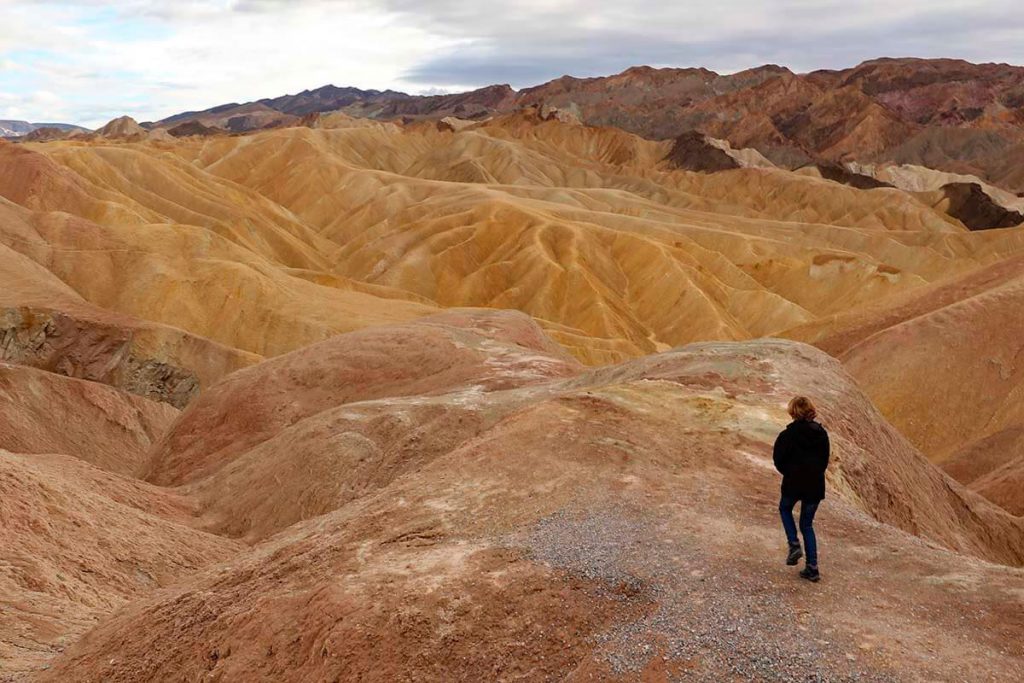Content
- 1 Introduction to Death Valley National Park
- 2 Physical Features of the Park
- 3 Biodiversity
- 4 Points of Interest within Death Valley National Park
- 5 Outdoor Activities in Death Valley National Park
- 6 Conservation and Park Management
- 7 Planning Your Visit
- 8 References and Additional Resources
- 9 Photo Gallery
Marvel at the raw beauty and the resilience of life in Death Valley National Park, the hottest, driest, and lowest point in North America. From the peaks of the mountains to the depths of the basins, this extraordinary park stands as a testament to the extremes.
Introduction to Death Valley National Park
Historical Overview
Designated a national monument in 1933 and elevated to national park status in 1994, Death Valley National Park holds a fascinating history of exploration and adaptation. It spans an area of 13,518 square kilometers, encompassing the Saline Valley, part of the Panamint Valley, and virtually the entirety of Death Valley.
Geographical Location and How to Get There
Located in eastern California, near the Nevada border, the park is accessible through several routes, with Highway 190 being the most commonly used. Its location is in the eastern Sierra Nevada region of California, also extending into a small area of the state of Nevada.
Physical Features of the Park
Geology and Topography
With its diverse geology including mountains, canyons, sand dunes, and salt flats, the park presents a breathtaking backdrop of rock formations and desert landscapes.
Climate and Extreme Conditions
Known as the hottest place in North America, temperatures in the summer can exceed 50°C (122°F), while winter nights can be chilly.
Biodiversity
Flora
Despite challenging conditions, a variety of desert-adapted plants like creosote bushes and ephemeral plants thrive in the park.
Fauna
The park’s fauna includes species adapted to desert life, such as the desert fox, desert tortoise, and over 400 species of birds.
Points of Interest within Death Valley National Park
Badwater Basin
Badwater Basin is the lowest point in North America, at 282 feet below sea level. This salt flat offers a unique visual experience, with its vast expanse of cracked white salt.
Zabriskie Point
Renowned for its panoramic views of Death Valley, Zabriskie Point provides spectacular vistas of the ever-changing colorful rock formations. It’s a popular spot for sunrise and sunset viewing.
Mesquite Flat Sand Dunes
Mesquite Flat Sand Dunes are the largest and most accessible sand dunes in Death Valley National Park. Visitors can experience a feeling of vastness and isolation as they walk through the sand dunes.
Dante’s View
For a breathtaking view of Death Valley, there’s no better place than Dante’s View. Perched at over 5,000 feet in elevation, this overlook offers panoramic views of Badwater Basin and the Panamint Mountains.
Artist’s Palette
As its name suggests, Artist’s Palette is a burst of colors on the slope of the Black Mountains. Minerals in the rocks create a palette of colors ranging from pink to green.
Outdoor Activities in Death Valley National Park
Hiking and Exploration
Death Valley National Park offers numerous opportunities for hiking and exploration, with trails cutting through a variety of stunning landscapes.
Photography and Wildlife Observation
With its diverse landscapes and abundant wildlife, the park is a popular destination for photographers and nature enthusiasts.
Camping and Accommodation
The park offers various camping and lodging options, from campsites to luxury accommodations, allowing visitors to immerse themselves in the desert’s beauty during their stay.
Stargazing
Thanks to its isolation and lack of light pollution, Death Valley National Park is a fantastic destination for stargazing.
Conservation and Park Management
Conservation Challenges
Death Valley National Park faces several conservation challenges, including managing water resources, protecting endangered species, and handling human impact.
Park Rules and Regulations
To ensure park conservation and visitor safety, there are various rules and regulations that must be followed, including those related to camping, hiking, and interacting with wildlife.
Planning Your Visit
Best Time to Visit
Due to extreme heat during the summer months, the best time to visit Death Valley National Park is during the cooler months, from November to March.
Safety Precautions
Visitors should take precautions for high temperatures, including proper hydration and sun protection. Additionally, it’s advised to avoid hiking during peak heat hours.
Available Guides and Tours
Several guide and tour services are available to help you explore the park safely and efficiently.
Available Services and Facilities
The park features various visitor centers, campsites, accommodations, and food services to meet visitors’ needs.
References and Additional Resources
For more information, visit the official Death Valley National Park page on the U.S. National Park Service website.
